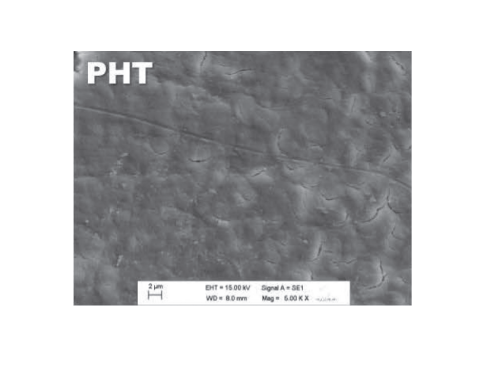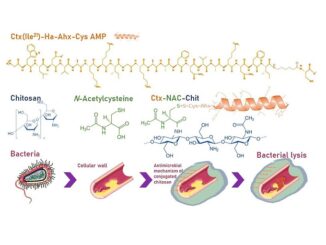
Effectiveness of Experimental Whitening Toothpastes Containing Colorants on the Optical Properties of Enamel
Abstract: Objective: This in vitro study investigated the whitening potential of experimental toothpastes containing optical colorants in their formulations in comparison with commercial products. The chemical and physical characteristics of the toothpastes, the morphology, and elemental analysis of the enamel surface after treatment were also analyzed. Materials and methods: One hundred twenty-five bovine incisor teeth were randomly divided into five groups according to the treatment: (i) experimental PHTALOX dental gel (PHT); (ii) experimental blue silica dental gel (SDG); (iii) Sensodyne Whitening Repair & Protect (WRP); (iv) Sensodyne True White (STW); (v) Snow White Toothpaste (SWS). The whiteness index differences (ΔWI D ) and color alteration (CIELab-ΔE, CIEDE2000-ΔE 00) were calculated after color change analysis using a spectrophotometer before and after the enamel treatment (n = 25). The surface and cross-sectional micromorphology were assessed using scanning electron microscopy. The elemental analyses were determined with energy-dispersive X-ray spectroscopy (EDS). The pH, particle size, zeta potential, and polydispersity index of toothpaste were evaluated. Data was statistically analyzed (ANOVA/Tukey, 5%). Results: Whitening toothpastes containing optical colorants were effective for whitening the enamel, as whiter teeth were observed following treatment (higher means of ΔWI D ). In addition, when the parameters ΔE ab and ΔE 00 were evaluated, these toothpastes were graded as very good effectiveness (grade 4). Other toothpastes were graded as 3 (good effectiveness). PHT had a neutral pH and a larger mean particle size (412.8 nm). Elemental analysis demonstrated enamel with a silicon-enriched mineral layer on the enamel surface treated with SDG. The Ca/P ratio after enamel treatment varied from 1.74 (SWS) to 2.04 (SDG and WRP). Conclusions: Experimental whitening toothpastes containing optical colorants are effective at bleaching the enamel. The synergism among the different parameters analyzed seems to positively affect the color change after brushing with whitening toothpastes containing optical colorants.
Author(s): Vilhena, F.V.; Graeff, C.F.O.; Svizero, N.R.; D’Alpino, P.H.P.
The Scientific World Journal
Published: March 2022
DOI: 10.1155/2022/4576912
CDMF
The CDMF, hosted at the Federal University of São Carlos (UFSCar), is one of the Research, Innovation and Dissemination Centers (RIDC) supported by the São Paulo State Research Support Foundation (Fapesp), and also receives investment from the National Council Scientific and Technological Development (CNPq), from the National Institute of Science and Technology of Materials in Nanotechnology (INCTMN).




